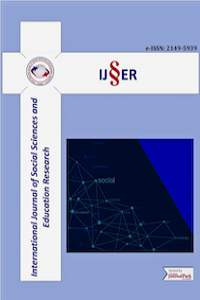Variations in the career preferences of senior secondary students towards curricular programs in tertiary education
Career decision-making is a critical scenario among senior secondary students and their parents. This study determined their level of occupational along the courses on medical or health related; business, safety and social related; technical and technological related; engineering; and teacher education. The results revealed the “less preference” of students in courses for medical and health related; business, safety, and social related; technical and technological; engineering; and teacher education. Nevertheless, in teacher education careers the students pegged nearly a moderate preference level. The students were claimed similar regards to these clustered courses. However, the study is conclusive that the teaching profession and those dealing with computer courses are highly desirable tertiary careers in the area of study. Imperative of the tertiary schools is giving priority of offering teacher education related careers, and other courses that demands mathematical and critical review. The guidance services shall include the career information drive
Keywords:
Variation Career Preferences, Secondary Students,
___
- Badri, M., Alnuaimi, A., J. Mohaidat, J., Rashedi, A.A., G. Yang, & Mazroui, K.A.. (2016). “My science class and expected career choices—a structural equation model of determinants involving Abu Dhabi high school students”. International Journal of STEM Education. 3:12. Available: https://doi.org/10.1186/s40594-016-0045-0, March 4, 2018
- Borchert. M.T. (2002). Career choice factors of high school students. Retrieved on De-cember 7, 2014 from, http://www2.uwstout.edu/content/lib/thesis/2002/2002borchertm.pdf
- Du Toit, E. & Y.Z. Cuba, Y.Z. (2017). Cost and profit efficiency of listed South African banks pre and post the financial crisis. Available: https://repository.up.ac.za/handle/2263/62848Edwards, K. & Quinter, M. (2011). Factors influencing students career choices among secondary school students in Kisumu Municipality, Kenya. Retrieved on December 4, 2014, from http://goo.gl/WRmS0z
- Faikhamta, C., Ketsing, J., Tanak, A., & Chamrat, S. (2018). Science teacher education in Thailand: a challenging journey. Asia-Pacific Science Education, 4:3. Available: https://doi.org/10.1186/s41029-018-0021-8, March 4, 2018
- Fizer, D. (2013). Factors affecting career choices of college students enrolled in agricul-ture. Retrieved on November 25, 2014 from, http://www.utm.edu/departments/msanr/_pdfs/Fizer_Research_Project_Final.pdf
- Lees, J., Webb, G., Coulston, F., Smart, A., & Remedios. L. (2016). Health professional workforce education in the Asia Pacific. Population and global health in health pro-fessional education. 5:1. Available: http://jphres.org/index.php/jphres/article/view/658
- Liscomb, D. (n.d.). Socialization and culture influences on career choices. Retrieved on December 7, 2014, from http://work.chron.com/socialization-culture-influences-career-choices-26088.html
- Pascual, N.T. (2014). Factors affecting high school students career preference: A basis for career planning program. International Journal of Sciences: Basic and Applied Re-search. Available: http://gssrr.org/index.php?journal=JournalOfBasicAndApplied&page=article&op=view&path%5B%5D=2261, March 12, 2018
- Taber, B.J. (2012). Time perspective and career decision-making in adults. Retrieved on December 3, 2014 from http://jca.sagepub.com/content/21/2/200.short
- Tremblay, R.C., C. Nikolenyi, C., & Otmar, L. (2003). Peace and Conflict: Alternative Strategies of Governance and Conflict Resolution. Journal of Comparative Policy Analysis. 5:2-3. Available: https://link.springer.com/article/10.1023/A:1023808318550
- Ziegler, G. (2013). Multilingualism and the language education landscape: challenges for teacher training in Europe. Multilingual Education, 3:1. Available: https://doi.org/10.1186/2191-5059-3-1, March 4, 2018
- Yayın Aralığı: Yılda 4 Sayı
- Başlangıç: 2015
- Yayıncı: Mahmut DEMİR
